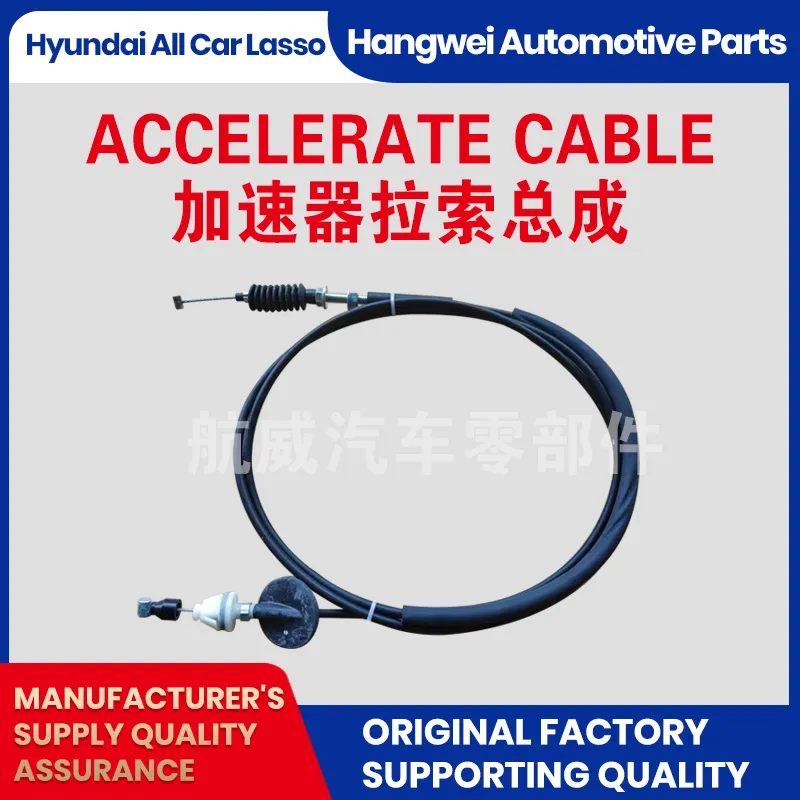throttle and cable
Throttle and Cable Essential Components of Engine Control
The throttle and cable system plays a pivotal role in modern-engine performance, serving as the bridge between the driver’s intentions and the engine’s response. This crucial component not only ensures that vehicles accelerate smoothly but also directly influences fuel efficiency and overall performance. Understanding the intricacies of throttle and cable systems can provide valuable insights into automotive design and engineering.
What is the Throttle?
At its core, the throttle is a valve that manages the air intake to the engine. It regulates the engine's power output based on the driver’s input through the accelerator pedal. When a driver presses down on the pedal, they are essentially calling for more power, and the throttle responds by opening up, allowing more air (and consequently fuel) to enter the combustion chamber. This process is vital for maintaining engine performance across different speeds and loads.
Throttle systems have evolved significantly over the years, transitioning from mechanical linkages to electronically controlled systems. Modern vehicles frequently utilize Electronic Throttle Control (ETC), which eliminates the traditional throttle cable in favor of sensors and motor-driven actuators. This technology enhances the precision of throttle control, improving responsiveness while also optimizing fuel consumption and emissions.
The Role of the Throttle Cable
In conventional vehicles, the throttle cable serves as the physical connection between the accelerator pedal and the throttle body. When the driver presses the accelerator, the cable pulls open the throttle valve, allowing air to flow into the engine. The simplicity of this mechanical link is part of its charm—it provides a direct response to the driver's input.
However, throttle cables are not without their drawbacks. Over time, they can fray, stretch, or become obstructed, leading to sluggish throttle response or even complete failure. Regular maintenance is essential to ensure that the throttle cable remains in good condition, as it is crucial for safe driving. In older vehicles, understanding the throttle cable assembly can be an invaluable skill for maintaining optimal performance.
throttle and cable

Advantages of Electronic Throttle Control
With the advent of ETC systems, manufacturers have been able to eliminate many of the limitations associated with traditional throttle cables. These systems rely on various sensors to detect the position of the accelerator pedal. Data is then sent to an Engine Control Unit (ECU), which precisely adjusts the throttle opening using an electric motor.
One of the most significant advantages of ETC is its ability to implement advanced features such as cruise control, traction control, and stability control. The electronic system can quickly and accurately respond to changing driving conditions, significantly enhancing vehicle safety and performance. Moreover, ETC can facilitate smoother acceleration and deceleration compared to traditional cable systems, leading to improved ride comfort for passengers.
Throttle Response and Performance
The responsiveness of the throttle is a key factor in how a vehicle feels during operation. Enthusiasts often prefer vehicles with a sharp throttle response that delivers immediate acceleration. This characteristic is essential for performance-oriented designs, such as sports cars and high-performance vehicles. However, a balance must be struck; excessively sharp throttle response can lead to a jerky driving experience, particularly for less experienced drivers.
Manufacturers often tweak the throttle response curve to cater to their target audience. For instance, a commuter car might prioritize smoothness and comfort, while a performance model may focus on aggressive responsiveness. The ability to adjust these parameters through the ECU illustrates the versatility of modern throttle systems.
Conclusion
The throttle and cable system, whether mechanical or electronic, is fundamental to vehicle performance. By directly connecting driver input with engine response, these systems play a critical role in ensuring a smooth and efficient driving experience. While traditional throttle cables have their charm and reliability, the shift towards electronic systems marks a significant advancement in automotive technology. With further developments on the horizon, the future of throttle control promises even more enhancements in performance, safety, and efficiency, making it an exciting area of automotive engineering. Understanding these components not only enriches one’s knowledge of vehicles but also highlights the complexities that engineers manage to create the driving experiences we enjoy today.
-
Workings of Clutch Pipe and Hose SystemsNewsJun.04,2025
-
The Inner Workings of Hand Brake Cable SystemsNewsJun.04,2025
-
The Secrets of Throttle and Accelerator CablesNewsJun.04,2025
-
The Hidden Lifeline of Your Transmission Gear Shift CablesNewsJun.04,2025
-
Demystifying Gear Cables and Shift LinkagesNewsJun.04,2025
-
Decoding Clutch Line Systems A Comprehensive GuideNewsJun.04,2025
